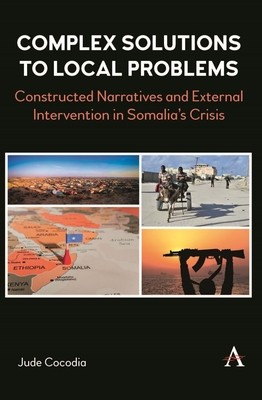
- We will send in 10–14 business days.
- Author: Jude Cocodia
- Publisher: Anthem Press
- ISBN-10: 183999326X
- ISBN-13: 9781839993268
- Format: 15.2 x 22.9 x 0.6 cm, minkšti viršeliai
- Language: English
- SAVE -10% with code: EXTRA
Reviews
Description
This book is divided into three sections.
The first section examines the political relationships/structures of Somalia's clans with focus on the pre-Siad Barre era. Somalis are largely one people further linked by one religion (Sunni Islam). Establishing their connectivity is crucial in view of this project's contention that Indigenous methods of conflict resolution that have so far worked in the north (Somaliland and Puntland) can work in the south-central regions where conflict still pervades.
The next section examines the conflict in Somalia from events leading to the exit of Siad Barre (the point where the conflict really begins) and the growth of the Aristocratic/Gerontocratic system of government in the north to address the situation. It will capture the rise of the Islamic Courts Union (ICU) in the south-central areas whose aim was the stability of the regions under their control. The gains, gaps and setbacks of these Indigenous systems will also be discussed in this section.
The third section captures the intervention of Ethiopia and the United States in Somalia's conflict and how the African Union (AU) was drawn into the fray to legitimize this intervention. Here the book deals with the following (research) question: Should the AU have gone ahead with the intervention plans of the US/Ethiopia that were directed at debilitating the ICU, or, should focus have been directed at supporting local structures put in place by the ICU to foster stability as had been done in the north by the clan elders? This section discusses the current state of affairs in view of what was forfeited.
EXTRA 10 % discount with code: EXTRA
The promotion ends in 22d.20:45:05
The discount code is valid when purchasing from 10 €. Discounts do not stack.
- Author: Jude Cocodia
- Publisher: Anthem Press
- ISBN-10: 183999326X
- ISBN-13: 9781839993268
- Format: 15.2 x 22.9 x 0.6 cm, minkšti viršeliai
- Language: English English
This book is divided into three sections.
The first section examines the political relationships/structures of Somalia's clans with focus on the pre-Siad Barre era. Somalis are largely one people further linked by one religion (Sunni Islam). Establishing their connectivity is crucial in view of this project's contention that Indigenous methods of conflict resolution that have so far worked in the north (Somaliland and Puntland) can work in the south-central regions where conflict still pervades.
The next section examines the conflict in Somalia from events leading to the exit of Siad Barre (the point where the conflict really begins) and the growth of the Aristocratic/Gerontocratic system of government in the north to address the situation. It will capture the rise of the Islamic Courts Union (ICU) in the south-central areas whose aim was the stability of the regions under their control. The gains, gaps and setbacks of these Indigenous systems will also be discussed in this section.
The third section captures the intervention of Ethiopia and the United States in Somalia's conflict and how the African Union (AU) was drawn into the fray to legitimize this intervention. Here the book deals with the following (research) question: Should the AU have gone ahead with the intervention plans of the US/Ethiopia that were directed at debilitating the ICU, or, should focus have been directed at supporting local structures put in place by the ICU to foster stability as had been done in the north by the clan elders? This section discusses the current state of affairs in view of what was forfeited.


Reviews